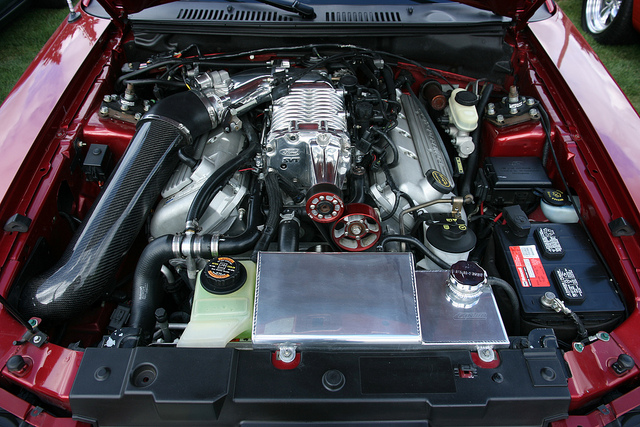http://e-info.org.tw/node/114105
歐洲車廠提高鋁用料比例 強調減碳、可回收
文字大小
48 2 Share1
本報2016年3月25日綜合外電報導,姜唯編譯;蔡麗伶審校
隨著全球努力減少溫室氣體排放,鋼等較重的金屬正逐漸被輕量、可回收的鋁所取代。金屬業界人士指出,由於車廠實施減碳,歐洲車的鋁材用料比例將於2020年提高至平均180公斤。
由於車廠實施減碳,歐洲車的鋁材用料比例將於2020年提高至平均180公斤。本圖僅供示意。圖片來源:SoulRider.222(CC BY-NC-ND 2.0)。
在2015年歐盟執委會的強制性目標之下,汽車製造商必須確保歐洲生產的汽車,每公里二氧化碳排放量平均不超過130克,並在2021年進一步降低至平均95克。排放量的限制會根據汽車的質量有所不同。
美國用一套以汽車大小和引擎效率建立的模型計算碳足跡,不過歐洲的排放量限制僅以汽車質量來計算。
戈茲指出,「歐洲以汽車質量訂定的規範,輕量化的誘因不像美國的碳足跡模型那麼強。以碳足跡模型建立的規範可以從重量和引擎效率調降二氧化碳曲線。」此外,Gotz表示歐洲產業界希望歐洲也能效法美國改採碳足跡模型。
產業組織歐洲鋁業(European Aluminum)總幹事戈茲(Gerd Gotz)引述2012年的預測報告指出,鋁製冷軋板和擠型件長期成長,歐洲車的鋁材用料預計將從2012年的平均140公斤成長至2020年的平均180公斤。
「這將帶動下游產業的成長。」戈茲在開普敦的鋁業研討會上表示。他說,這個趨勢目前在歐洲是由較重的高級車款所帶動,不過也僅限於較小型的車款。包括賓士、奧迪、福斯和寶獅在內的各大車廠,從車門到引擎等零組件皆將導入更高比例的鋁料。
「未來汽車不會再進入掩埋場,其中的鋁材可以不斷被重複使用。」戈茲說。
鋁礦開採儘管為大眾所詬病,但鋁的循環再造與生態關係重大。利用再造鋁材除了可以節省能源,更可減少溫室氣體的排放。據美國環保署(USEPA)的估計,生產再造鋁的淨碳排放量比生產原鋁低40%之多。
European cars to use more aluminum to meet CO2 targets
Date: 18-Mar-16
Country: SOUTH AFRICA
Author: Wendell Roelf
Country: SOUTH AFRICA
Author: Wendell Roelf
Audi A3 light weight construction chassis are seen at the production line of the German car manufacturer's plant in the Bavarian city of Ingolstadt April 11, 2013.
Photo: Michaela Rehle
Photo: Michaela Rehle
The amount of light, recyclable aluminum in European cars will rise to 180 kg on average by 2020 as automakers look to cut harmful carbon emissions, a senior metals industry official said.
Global targets to curb greenhouse gases are prompting a shift to aluminum away from other, heavier metals such as steel.
Aluminum use is expected to rise to 180 kg per car on average from 140 kg in 2012, with long-term growth coming from rolling sheet and extrusion components, said Gerd Gotz, director general of industry body European Aluminium, citing a new study confirming forecasts it made in 2012.
"This will be the growth engine of the aluminum downstream industry," Gotz told Reuters at an aluminum conference in Cape Town.
Under 2015 European Commission mandatory targets, manufacturers were to ensure the cars they produce emit no more than 130 grams of CO2 per kilometer on average.
By 2021, that fleet average is to fall to 95 grams per km, with emission limits based on the mass of a car.
Carmakers, including Mercedes Benz (DAIGn.DE), Audi, Volkswagen (VOWG_p.DE) and Peugeot (PEUP.PA), are expected to use more aluminum in parts ranging from doors to engines.
Heavier, luxury car models are driving the trend in Europe at the moment, Gotz said, although this is expected to filter down to smaller models.
"The cars will not land in a landfill anymore and you will be able to re-use the aluminum again and again," he said.
The United States uses a footprint model that considers a car's size and engine efficiency while in Europe emission profiles are based only on a vehicle's mass.
"Mass-based regulations in Europe is not giving the same incentive for light weighting as in the U.S.," Gotz noted.
"When you come to a footprint-based regulation you really bring down the CO2 curve in both weight and engine efficiency," he said, adding that the industry body wants the footprint model adopted in Europe.
(Editing by Pratima Desai and Jason Neely)

沒有留言:
張貼留言